Messy Marv Big Birds Yellow and Blue Nikes Lyrics
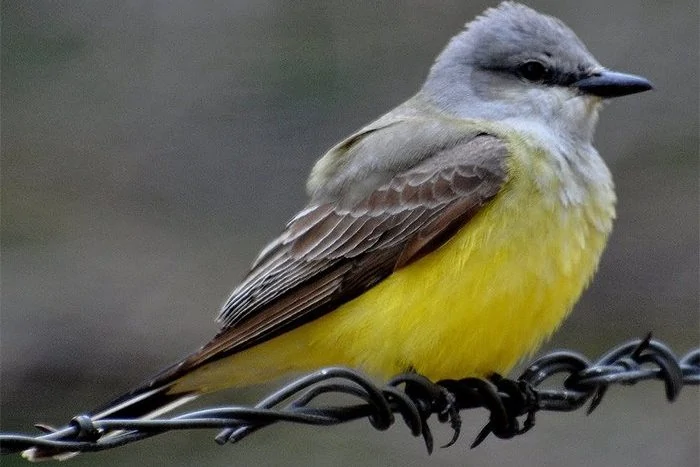
If you need help with identifying yellow and gray birds that you have spotted in North America then look no further as this guide shows you all you need to identify the birds you have spotted.
It can be difficult when there are so many yellow birds but if you have another clue, such as those birds that also have gray it makes the identification much easier.
So check out all these yellow and gray birds and see if you can spot the bird you are looking for.
7 Species of Yellow and Gray Birds in North America:
1. Pine Warbler
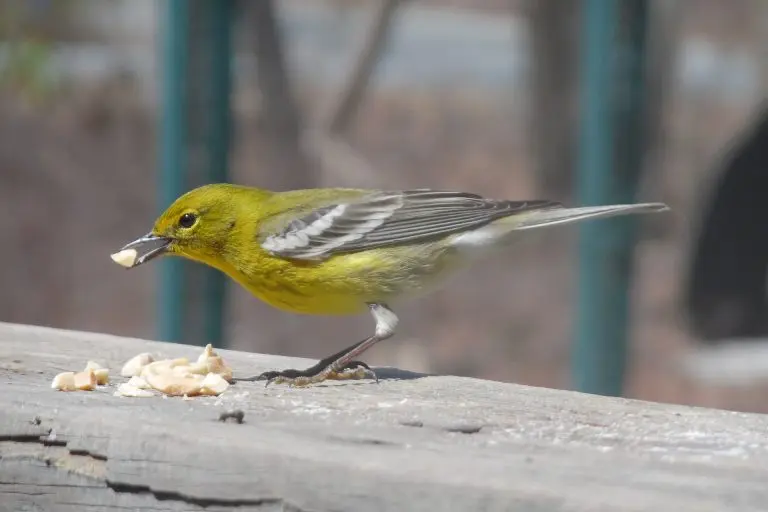
Pine Warblers are small plump yellow birds with olive backs, white lower bellies, and gray wings with white wingbars. Females can appear browner and have more white on the belly.
- Setophaga pinus
- Length: 5.1-5.5 in (13-14 cm)
- Weight: 0.3-0.5 oz (9-15 g)
- Wingspan: 7.5-9.1 in (19-23 cm)
Pine Warblers breed in northeastern US states before heading to southeastern US states. Some remain all year in southeastern US states.
You can find Pine Warblers in pine forests, as their name would suggest, often high up in the trees. They eat caterpillars, beetles, spiders, and other insects and larvae, and when the weather is colder, they will eat fruit and seeds.
Pine Warbler Song:
Nests of Pine Warblers are, as you would expect, in pine trees! They are made from twigs, bark, pine needles, and grass, bound with spiders silk and lined with feathers and animal hair. They lay up to five eggs which take up to two weeks to hatch and another ten days for the young to leave the nest.
Attract Pine Warblers to your yard with tube feeders and platform feeders with millet, cracked corn, sunflower seeds, peanut hearts, and suet. Also, plant native fruits and vines such as bayberry, grape, sumac, and Virginia creeper.
Fun Fact: Pine Warblers are one of the only warblers to eat seeds mainly, and so you are more likely to see them at backyard feeders.
2. Western Kingbird

Western Kingbirds are large flycatchers with yellow bellies, whitish chests, gray heads, grayish-brown wings, and black tails with white edges.
- Tyrannus verticalis
- Length: 7.9-9.4 in (20-24 cm)
- Weight: 1.3-1.6 oz (37-46 g)
- Wingspan: 15.0-16.1 in (38-41 cm)
Western Kingbirds breed in summer in western US states, the plains area, and into Canada. They migrate to Mexico and Central America, but some may overwinter in the south of Florida.
You can find Western Kingbirds in open habitats, and they are often found perched on fences and utility lines, waiting for insects to fly by before catching them in mid-flight.
Western Kingbird call:
Nests of Western Kingbirds are usually built in trees or shrubs, but they also nest in human-made buildings or posts. The nest is made by the female from twigs, grass, and plant material woven into a cup.
They lay up to seven eggs which take two or nearly three weeks to hatch, and the same again for the young to leave the nest.
Attract Western Kingbirds to your yard by making it insect-friendly and planting elderberry or hawthorn, from which they will also eat the fruit.
Fun Fact: Western Kingbird parents will feed their young for a further three weeks after they leave the nest.
3. Prothonotary Warbler
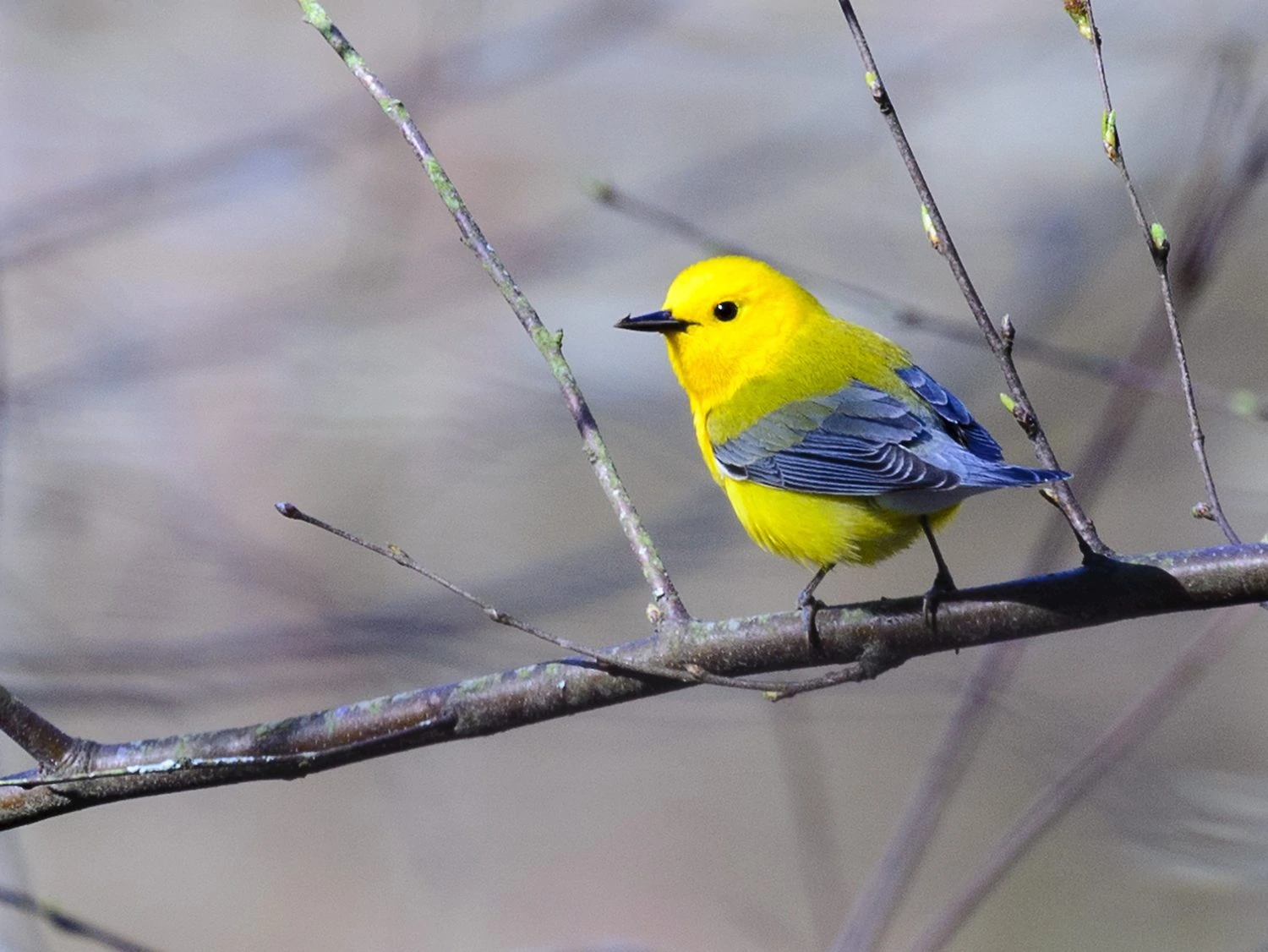
Prothonotary Warblers are bright yellow with blue-gray wings and tails. They are large for Warblers and have thick black beaks, and are white under their tails. Females are less bright than males.
- Protonotaria citrea
- Length: 5.1 in (13 cm)
- Weight: 0.44 oz (12.5 g)
- Wingspan: 8.75 in (22 cm)
Prothonotary Warblers breed in eastern US states, and they spend the winter in Mexico and down to northern South America.
You can find Prothonotary Warblers near streams and wet woodlands foraging for spiders, insects, and snails. In winter, they will also eat fruit and seeds.
Prothonotary Warblers song:
Nests of Prothonotary Warblers use abandoned woodpecker nest holes in trees that are near water. Males place moss in the hole, and then the female makes a cup-shaped nest from grass and leaves, and other plant material.
They lay up to seven eggs which take about two weeks to hatch and an additional ten days for the young to leave the nest.
Attract Prothonotary Warblers to your backyard with a nest box if you live near wet areas.
Fun Fact: Prothonotaries are the bright yellow robes worn by members of the Roman Catholic church, and that is how the Prothonotary Warblers got their name.
4. Nashville Warbler
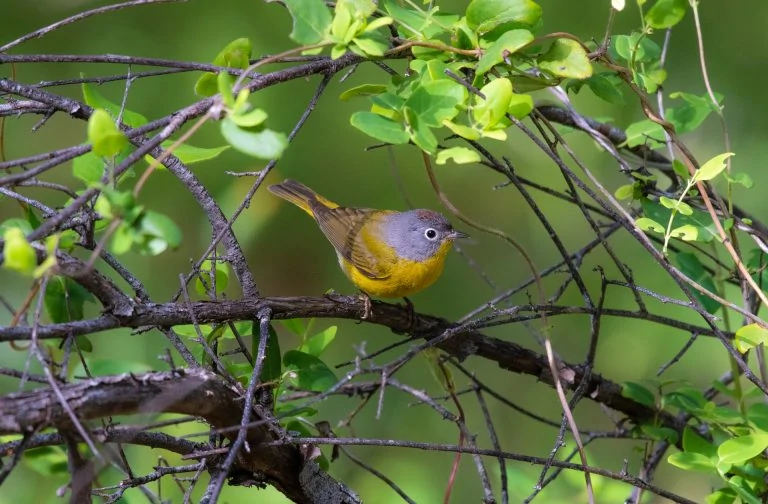
Nashville Warblers are mostly yellow underneath but with white lower bellies. They have a greenish yellow back and gray head with a white eyering. Females and juveniles are less bright than males.
- Leiothlypis ruficapilla
- Length: 4.3-5.1 in (11-13 cm)
- Weight: 0.2-0.5 oz (6.7-13.9 g)
- Wingspan: 6.7-7.9 in (17-20 cm)
Nashville Warblers breed in northeastern US states and Canada, and there is a smaller population in northwestern US states and into British Columbia. They can also be seen during migration in most US states. They spend the winter mainly in Mexico.
You can find Nashville Warblers in scrubby habitats and low deciduous forests hunting for insects.
Nashville Warbler song:
Nests of Nashville Warblers are hidden in shrubs close to the ground. The nest is built from bark, grass, and moss woven into a cup lined with softer material. They lay around four eggs which take about twelve days to hatch and ten days for the young to leave the nest.
Attract Nashville Warblers to your backyard in winter in southern US states with suet.
Fun Fact: Nashville Warbles migrate along the Atlantic Coast in their first year but only migrate inland after that.
5. Couch's kingbird
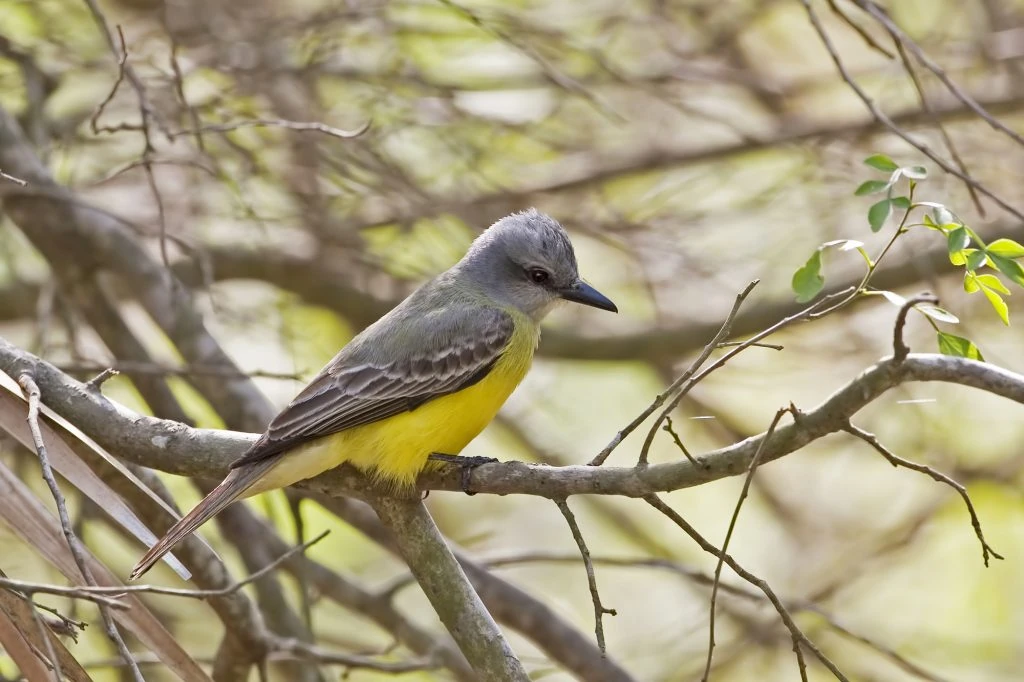
Couch's Kingbirds are large flycatchers that have bright yellow breasts and bellies and gray heads, white throats, and are gray-brown on the back.
- Tyrannus couchii
- Length: 7.9-9.4 in (20-24 cm)
- Weight: 1.4 oz (40 g)
Couch's Kingbirds do not migrate and can be found in Mexico and Gulf Coast states. You can find them on woodland edges and near trees hunting for flying insects. They also eat fruit and berries.
Couch's Kingbird song:
Nests of Couch's Kingbirds are made from twigs, bark, and other plant material and are built in trees.
6. Tropical kingbird
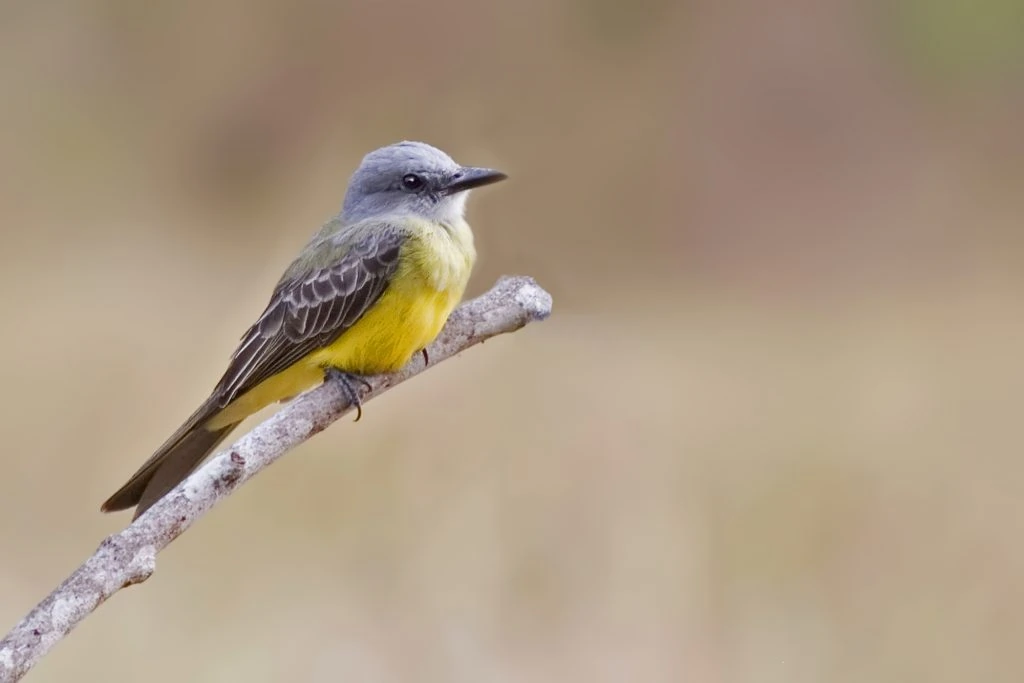
Tropical Kingbirds are large flycatchers that are bright yellow underneath and gray on the back. Their wings and tail are gray-brown.
- Tyrannus melancholicus
- Length: 7.1-9.1 in (18-23 cm)
- Weight: 1.1-1.5 oz (32-43 g)
Tropical Kingbirds are usually resident in Central and South America however, they do move north into southern US states for breeding and occasionally on the Pacific Coast of the US.
You can find Tropical Kingbirds in open country with plenty of flying insects. They will also eat fruit and berries.
Tropical Kingbird song:
Nests of Tropical Kingbirds are built high up in trees by the female and are a messy collection of twigs, vines, and grass, into which she lays around three eggs.
Fun Fact: Tropical Kingbirds nest near wasps or blackbirds, which are known to fiercely defend their nests and chase predators away.
7. Blue-winged Warbler
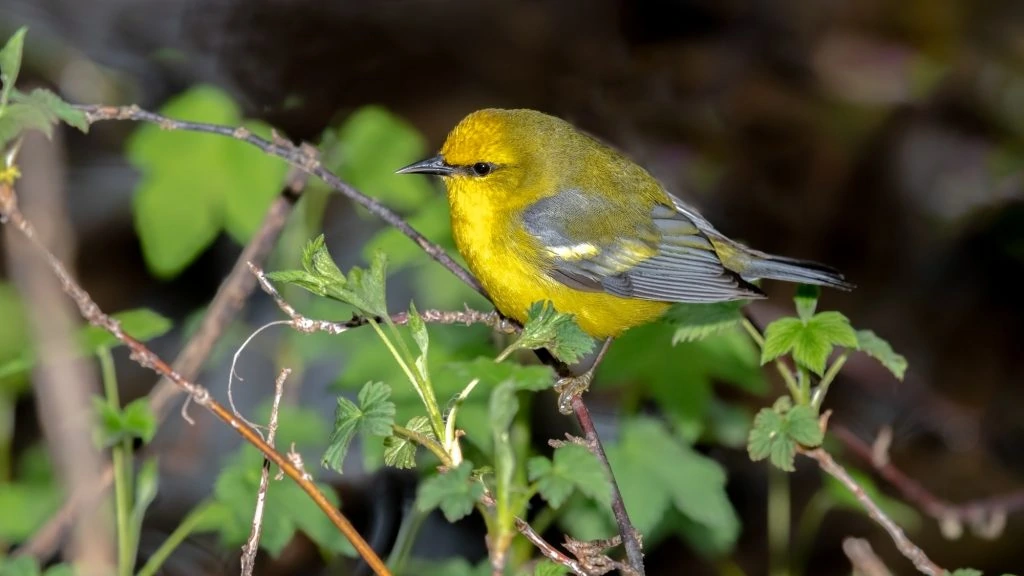
Blue-winged Warblers are named for the bluish-gray color of their wings. Adults are yellow-green on top, with a black eye line extending from their long bill across the eye, making them look angry.
Their breast and belly are mostly bright yellow, with females having a slightly paler shade but, more often, indistinguishable from the males. Adults have two white wing bars while juveniles have them too, but they're so thin, they're almost invisible.
- Vermivora cyanoptera
- Length: 4.75 inches (12 cm)
- Weight: 0.3 oz (9 g)
- Wingspan: 6.75 – 7.5 inches (17 – 19 cm)
Blue-winged Warblers breed in eastern US states, except southern states, but they can be spotted here during their migration to Mexico, Central America, and the Caribbean for winter.
You can find Blue-winged warblers in abandoned, brushy fields and pastures, forest edges, and thickets. They usually settle in higher elevation areas with a lot of grass and canopy cover.
Blue-winged Warblers feed on insects and spiders they find in various plants and trees. They will even hang upside down from tree branches to check under leaves for insect larvae to feed their young.
Blue-winged Warbler Song:
Nests of Blue-winged Warblers are often found on the ground, in thick bushes, or in undergrowth. Nests are cup-shaped and made of dead leaves. The female lays four to seven eggs, taking about 12 days to incubate.
Fun Fact: Blue-winged Warblers often hybridize with Golden-winged Warblers to produce Brewster's and Lawrence's Warblers.
Source: https://www.birdadvisors.com/yellow-and-gray-birds/
0 Response to "Messy Marv Big Birds Yellow and Blue Nikes Lyrics"
Post a Comment